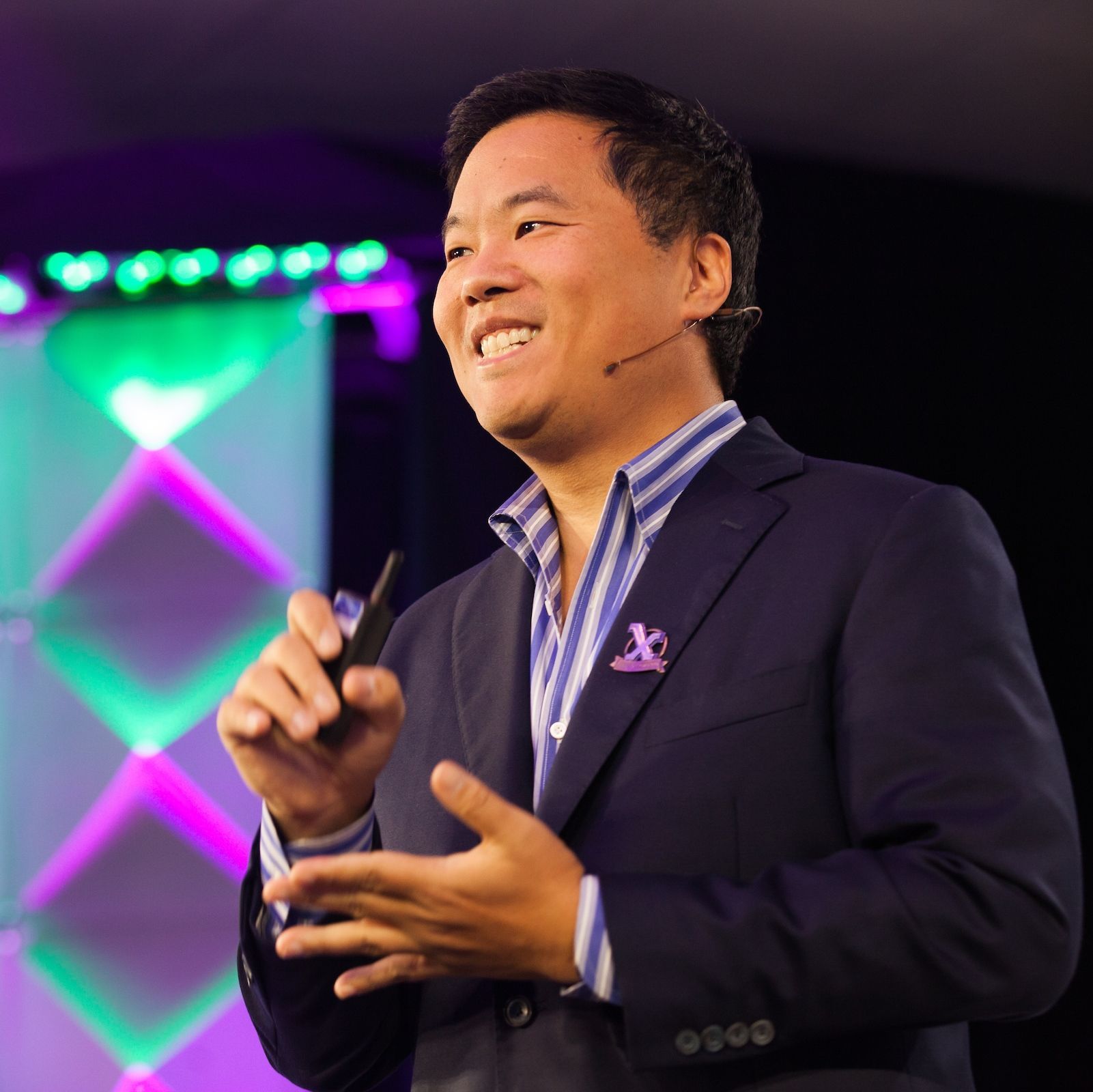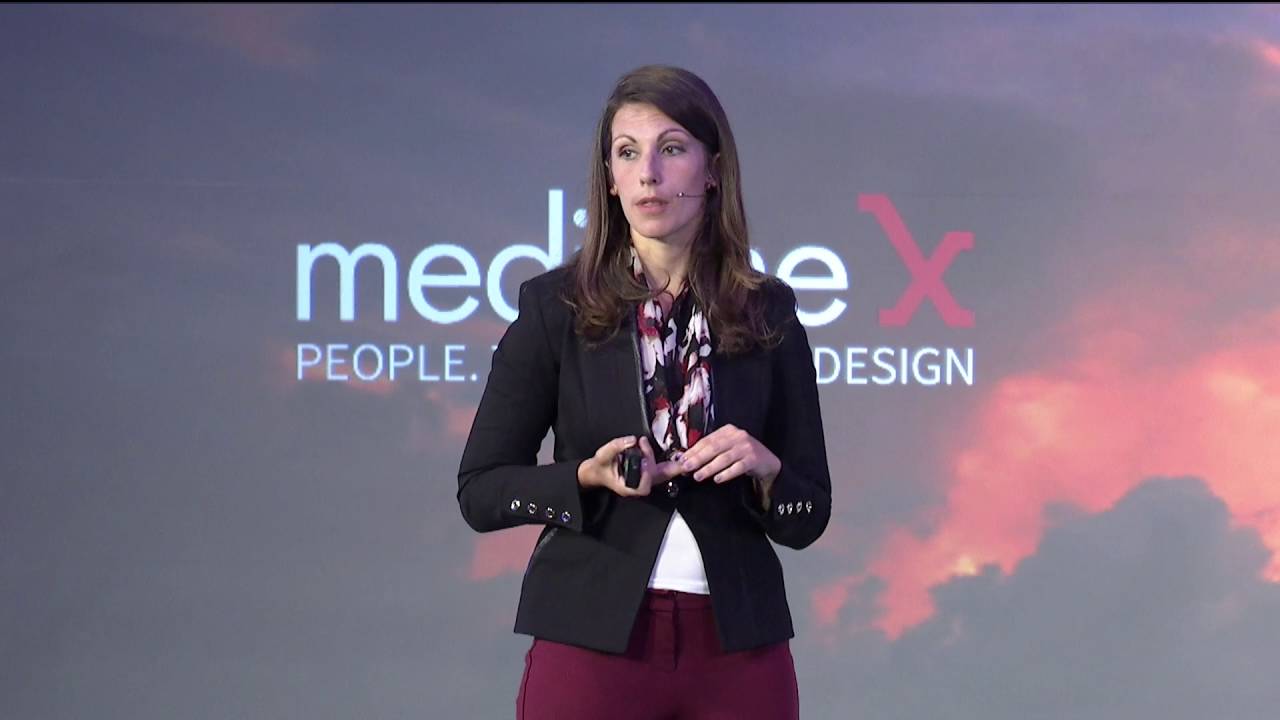STANFORD, CA — For all its high-tech tools and trappings, American medicine is still stuck in the 19th century. 
Its reductionistic logic, hierarchical organizational structures, arcane licensure laws, ossified education systems, and isolated knowledge silos have not changed much since the late 1800s.
Consider the information revolution that transformed banking 30 years ago—technological advances that freed people from “banker’s hours,” put 24/7 cash within a few minutes’ walk or ride from almost anywhere, and gave people unprecedented freedom over their financial lives. That sort of fluidity and customer-centricity has barely touched healthcare.
As they have for decades, many physicians today still write their SOAP notes in paper records. Faxing still a preferred mode of inter-office communication. Major health plans still post upwards of 30,000 pieces of mail per hour on an average working day. Patient care is still tailored to the convenience of practitioners and plans, not to the patients themselves.
Medicine has proven remarkably resistant to the changes that have transformed other fields.
Larry Chu, MD, an anesthesiologist, and founder of the Medicine X conference hopes to change that….and quickly.
Disruptive Co-Creation
Sponsored by Stanford University and heading into its 6th year, Medicine X is a healthcare transformation think-tank bringing together technologists, administrators, entrepreneurs, a diverse spectrum of practitioners, and most importantly patients, to collaborate as peers in re-envisioning medicine.
If there’s one lesson to be learned from the Trump campaign’s startling victory on Election Day, it is that business-as-usual doesn’t cut it anymore. Americans are frustrated by and alienated from mainstream status quo systems, and they’re insisting on change.
This is clearly true in politics. It is also true in healthcare, if to a lesser degree of stridency.
Medicine X offers a creative channel for people of all walks of life who feel poorly-served by established healthcare systems, and who envision a healthier world nurtured by democratized information and life-enhancing technology.
Degrees & credentials aren’t what count at Med X. Fresh thinking, innovative ideas, and real-world personal experience do.
Dr. Chu, who directs Stanford’s Anesthesia Informatics and Media Lab, contends there’s a lot of fatuous “innovation” in healthcare arising from companies and purchasers that do not consult or even consider their end-users.
At the same time, fantastic technologies–everything from real-time, point-of-care blood tests to global telemedicine platforms—are sidelined by the entrenched economic interests of  slow-moving bureaucracies.
slow-moving bureaucracies.
Under its trademarked “Everyone Included” motto—Med X fosters what Chu calls “Disruptive co-creation.” He is convinced that meaningful innovations—the ones with the greatest potential to improve health, reduce cost, eliminate inconvenience, and even make medicine fun—don’t come from the top down.
“Expertise isn’t exclusive or special. Expertise can come from any person, and should be inclusive to all healthcare stakeholders,” he said at the conference in September. “We need to see each other for the people we are, not the degrees next to our names, the power we hold within the system, or the dollars we have.”
Invested in Inertia
In most other industries, supply and demand are directly related. In healthcare, they’re fundamentally disconnected, explained Sri Velamoor, a partner at McKinsey. Direct-pay practices notwithstanding, healthcare choices are largely defined by self-serving third-parties; practitioners do not really compete for patients’ business; patients don’t shop like true consumers; and nobody seems to know the cost or value of anything.
The users, the payors, and the providers of medical services often have conflicting incentives, and it’s usually the user’s needs that are lowest priority. These are not conditions that promote real innovation.
“Healthcare has not focused on productivity. It is the only industry that has consistently lost productivity,” said Velamoor. “Are we getting more for less? No! We spend 16 cents on every dollar on administration. Other industries spend 1 to 2 cents. That’s not right. There are many intelligent people in healthcare but intelligence is lacking.”
Big hospital systems and managed care plans are deeply invested in their own inertia. They spend upwards of $55 billion annually on high-tech automation, compliance, and upkeep of inefficient legacy systems, and very little on innovating new game-changing systems.
Charlie Martin, a Texas entrepreneur who once headed Vanguard Health Systems, believes entrenched corporate interests –the hospital networks, insurance plans, drug and device companies—are squelching medicine’s evolution.
Over his 50-year career, Martin led several remarkable hospital turn-arounds. But he grew disgusted with the narrow-mindedness, self-protection, and influence-peddling he saw in the industry.
“$500 million is spent each year on Washington lobbyists to keep things exactly as they are. The system is working for them. They don’t want change. They don’t want cuts coming out of their pockets. Half of healthcare is not evidence-based. A lot of evidence-based stuff is not reimbursed.”
Martin left the hospital world because he was, “failing miserably at trying to provide services efficiently, effectively, conveniently, with high-quality and good experience on the part of the people we served.”
He now runs a private equity firm that invests in leading-edge healthcare projects, including Contessa Health—a Nashville based pioneer in home-hospitalization. Contessa deploys tech-enabled clinicians to provide inpatient level acute care –including some surgeries–in peoples’ homes. Essentially, it’s taking the concept of outpatient surgery out of the clinic entirely.
External Pressures
Healthcare is in for a shake-up regardless of what the Trump administration does—or does not do—with the Affordable Care Act. Three major pressures are combining to force change.
Bundled Payment & Value-Based Reimbursement: ObamaCare repeal or not, Medicare, Medicaid, and military healthcare will remain massive medical money-pots. Federal programs are clamoring for efficiency, improved productivity, and patient-centricity. That’s not likely to change. Pressure to reduce pricing disparities and improve fiscal as well as clinical ROI is stoking a massive need for better and more interoperative IT.
Empowered Patients: People not well served by the medical establishment—especially those dealing with serious diseases–are taking matters into their own hands. Empowered by the internet and mobile devices, they’re forming research networks, self-educating, crowd-funding studies and treatments, and collaborating directly with entrepreneurs. Rising co-pays, high-deductible plans, and health savings accounts—all of which will likely increase under Trump—add fuel to this grass roots medical rebellion, one that’s happening largely outside of medical academia and mainstream health systems.
Influence of Silicon Valley: According to McKinsey consultant Basel Kayyali, “the tech sector is thinking a lot more about healthcare than healthcare is thinking about tech.” Roughly $15 billion in tech industry capital has gone into healthcare ventures in the last five years. IT entrepreneurs are bent on disrupting healthcare with the same vigor they brought to retail, travel, entertainment, and finance.
“No category has grown to this magnitude since the dotcom era,” says Kayyali. “There are billions of dollars in play.” He added that consumers—ordinary people—are primed for tech-enabled medical transformation. “Once people become aware of possibilities for better ways to do things, they want it.”
Patients as Peers
Medicine X has established a global network of “e-patients,” picking up on the work begun decades ago by the late Tom Ferguson, MD, a visionary physician who suffered from multiple myeloma, and who spearheaded the participatory medicine and self-care movements.
The “e” stands for “equipped, enabled, empowered and engaged.” These days, one might add, “electronically energized.”
 Medicine X’s e-patient scholars —people confronting conditions like lupus, glioblastoma, multiple sclerosis, colorectal cancer, ALS, diabetes, muscular dystrophy, chronic pain syndromes, and very rare disorders like Mobius syndrome—are all leading grassroots innovations of one sort or another.
Medicine X’s e-patient scholars —people confronting conditions like lupus, glioblastoma, multiple sclerosis, colorectal cancer, ALS, diabetes, muscular dystrophy, chronic pain syndromes, and very rare disorders like Mobius syndrome—are all leading grassroots innovations of one sort or another.
Their input is essential to the Med X conference, one of the few healthcare meetings that puts patients on peer-to-peer footing with practitioners.
“Some medical people are afraid of patients speaking out and raising issues for which they do not have solutions. So they want to silence us,” says Julie Flygare, JD, an attorney and avid athlete living with narcolepsy. Flygare started Project Sleep, a non-profit advocacy network focused on sleep problems, promoting sleep health, and providing scholarships to young people with sleep disorders.
The patient empowerment movement is shaking up clinical research.
For the last 100 years, studies have been designed, conducted, evaluated, and debated by credentialed “experts” from academia, the government, and industry. Patients were almost an afterthought—necessary guinea pigs that are supposed to be passive and compliant, if not outright grateful to be selected.
That attitude won’t fly these days, says Claudia Williams, Senior Advisor for health Technology & Innovation at the White House Office of Science & Technology Policy. Today’s patients want to be participants, not “subjects.” They do not want to feel like they’re mere means to someone else’s ends.
“What might it look like if participation included true partnership on equal footing between researchers and participants? If we were bringing the purpose of research? If we could donate our data freely into the research process? If we decided what got published?”
Williams, who led an Obama administration effort to give more than 150 million Americans free access to their own digital health data, believes smartphones are the key to improving research and making it directly relevant—and directly accessible–to real people. It’s part of a broader movement to move research data out of its traditional academic silos and into the street.
Another federal initiative, the Patient Centered Clinical Outcomes Research Institute (PCORI), is engaging ordinary people in comparative effectiveness research—designing, evaluating, and peer-reviewing trials. PCORI has funded roughly $1.5 billion in projects since 2010.
“Scientifically sound research isn’t worth much if it isn’t helpful to the people the intervention is intended to help,” said Bill Silberg, PCORI’s Communications Director. “People want to know in their particular circumstances, based on the outcomes that matter to them, “What should we do? How can we make an informed decision based on the best evidence? “
Other projects—including www.clinicaltrials.gov, www.antidote.com (formerly TrialReach), and www.CureClick.com— harness the internet’s vast networking power to speed trial recruitment, enabling would-be participants to connect directly with investigators and to track trials in progress.
Pharma is definitely buying into the patient-centered research agenda. Drug executives realize that people will no longer simply take meds just because their doctors tell them to. If they want a profitable future, they’re going to have to start making products people actually want to take.
Craig Lipset, Head of Clinical Innovation at Pfizer says his company and others are now focusing on “deliverables” that mean something to patients, not just to doctors, administrators and shareholders. They’re also giving study participants direct access to their own results—something that rarely happened historically.
Patient-centricity is the watchword at medical journals, too. While academic publishing managed to survive the internet with its 19th century formalities intact, journals run the risk of irrelevance in a world where patients freely trade real-world, real-time treatment information in the Twittersphere. Many journals are reaching out directly to patient communities to try and engage them in scientific dialog.
Freedom vs Security
Active patient involvement in drug research raises an unprecedented question: What separates constructive patient engagement with an eye toward better outcomes from unfettered drug company manipulation of very vulnerable populations? Right now, that’s unclear.
Similarly, this movement raises the issue of data freedom versus data security—an undercurrent in many Med X talks.
In general, self-motivated people with serious diseases want free access to the widest possible range of information. They also want open, unfiltered connections to others struggling with the same challenges. There are dozens of apps and online systems that facilitate this.
PatientsLikeMe.com is one. It’s an online community of more than 400,000 people dealing with more than 2,500 distinct disorders. The free site facilitates open exchange of personal medical data, enabling participants to learn from one another, share treatment experience, and track aggregated datasets relevant to their conditions.
According to Sally Okun, RN, the company’s VP of Advocacy, Policy & Patient Safety, “There’s an organic experience that begins to happen when people see data visualized in ways that make meaning. They see trends, they can take steps. Being able to see other peoples’ data is quite powerful. It helps you understand that you are not alone.”
But other patients are not the only ones seeing data from PatientsLikeMe. The venture-funded company earns revenue by selling de-identified, aggregated data to drug and device companies—a fact the founders do not hide from participants.
For many e-patients, data security concerns take a back seat to data access desires. They believe people have the right to own their medical data and to do with it as they please. They’re acutely aware of the potential for hacking and illicit or discriminatory use of health info, but they prefer to make their own risk-benefit analyses about sharing and security.
Crashing the Medical Cartel
At the heart of all of these trends is the desire of many patients, practitioners and entrepreneurs to flatten the hierarchies that have dominated medicine for more than a century. It is an impulse the Medicine X community actively nurtures.
Lindred Greer, a Stanford Professor of Organizational Behavior, studies power dynamics in business. She contends that hierarchies based on vested authority and position—while useful to a point—are detrimental to healthcare innovation because they amplify some voices at the expense of others. And often, those who are squelched have the most useful insights and experience.
“Hierarchy is the root cause of many of the problems in healthcare. It inhibits participation, and preempts creative conflict and debate, and as a result, it warps the decision-making process,” Greer told Med X.
process,” Greer told Med X.
Too often, medical decisions are determined by opinion and position rather than data and reason. Simply put, people vested with power talk more and talk louder—even if they don’t know what they’re talking about. Those with less sanctioned power go quiet, even if they know more. “Power changes your brain function without you even knowing it.”
In the context of shared decision-making the best medical outcomes emerge when everyone focuses on data, not positional stances. “”My way or the highway” is not a good way to get to a good outcome,” she stressed.
Gregory Schmidt, a young internal medicine resident at the University of Manitoba, believes the medical cartels established in 1800s are about to be shattered by consumer-centric technologies and machine intelligence. And that’s a good thing.
“In the future most of what doctors do today, will be done not by doctors. It might be done by machines or by other clinicians who aren’t physicians.” Much of what physicians now do can be segmented into discrete skill-sets and delegated to people with far less education—or even to smart machines. This would increase availability of these procedures, drop their price, and probably improve quality.
He’s a firm believer in putting maximum healthcare know-how in the hands of the greatest number of people. And we now have the tools to do so.
“Once something is digitized, it can be democratized, decentralized and dematerialized. We can potentially deliver very high quality care in terms of diagnosis and disease management through one of the most democratized platforms in the world—the smartphone.”
Tapping the true health potential of simple inexpensive mobile devices will oblige physicians to cease underestimating their patients.
“Doctors are reluctant to give control to patients,” says Schmidt. “There was a time when we thought patients wouldn’t be able to take their own blood sugars and manage their own insulin. We thought they wouldn’t be able to titrate their own diuretics. But they can. Initially blood pressure cuffs were only sold to clinicians. Now we encourage people to take their BP at home.”
Citing the OpenNotes study—a yearlong Robert Wood Johnson Foundation project involving 105 doctors and more than 19,000 patients—Schmidt said engagement, compliance, and outcomes all improve when patients have access to their complete medical records.
Doctors of the future, says Schmidt, should focus on those things that cannot be done by smart machines or people with less training. And there will be plenty of work to go around.
“I don’t think patients should just be going off the shelf and randomly buying MRIs or trying new medications. But by changing the regulatory environment to make it legal for people to order their own tests and treatments, we can dramatically change the way we have innovation in healthcare delivery.”
END







